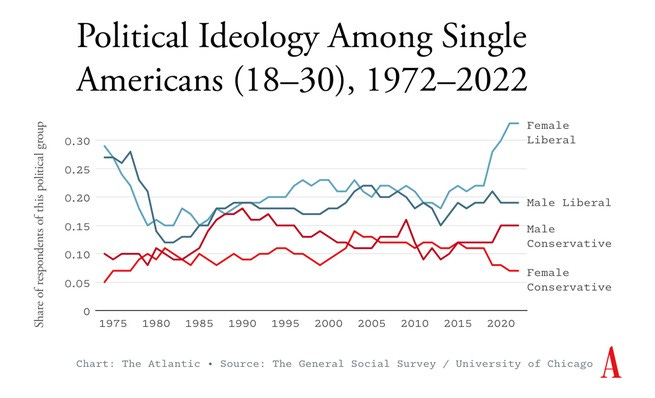The Largest Shidduch Crisis Ever?
What we can learn from the huge dating/marriage problem in non-Jewish society
For excellent reasons, people are talking about the large numbers of Orthodox singles struggling to find a shidduch. Everyone at every level loses when even one Jew is denied the many benefits of happy marriage. And, of course, understanding the scope and - especially - the causes of the problem is necessary before we can work towards meaningful changes.
There’s been no shortage of articles published on the topic over the last three or four decades. As you may remember, even I have contributed my own thoughts. Various individuals and organizations seem to have collected and analyzed population data in the hope it would reveal clear and useful insights. (Although I’ve begged at least three or four of them to share their data with me without success.)
Many feel that a primary problem is the “age gap.” Here’s how I’ve described that:
Because the frum community’s birth rate is so high, a particular age cohort will be larger than a peer age cohort that’s even two or three years older. Because, in the yeshiva world, boys tend to begin looking for shidduchim a few years later than girls (23-24 vs 19-20), there will naturally be fewer boys available in the age bracket where girls are typically looking. The obvious solution is to reduce or eliminate the age gap by convincing boys (along with their families and rebbaim) to begin dating earlier.
But could there be more compelling causes?
Let’s talk about that other “shidduch” crisis. A recent article in The Atlantic suggested that a demographic imbalance in American society is leading to millions of young people experiencing growing difficulties finding life partners.
Take a moment to think about this chart:
Since 2017 or so, significantly more female Americans between 18 and 30 are identifying as political liberals. During that same time, males are adopting conservative ideologies at a more modest - but also significant - rate. Consider, too, the Atlantic’s observation that around two-thirds of that population cohort would likely refuse to marry someone with an opposing political orientation.
The age of politically diverse but happy families seems to be over.
What might all that have to do with the Orthodox world and its very specific problems? Well, there’s an alternative theory that seeks to explain why so many “yeshivishe” girls can’t find husbands. Perhaps, goes the reasoning, there are just as many 23 year old girls as boys, but those girls are looking for a kollel lifestyle at far higher rates than there are boys who share that interest.
But could the interest gap be large enough to make a difference? After all, aren’t both boys and girls coming from the same communities and families: how could they turn out so different?
That’s where the Atlantic article gets interesting. Unless you’re going to claim that there are somehow more girls in blue states and more boys in red states, you’ll have to agree that individual communities and even individual families are demonstrably producing a generation that’s deeply split by gender. And they’re split so radically that there’s very little interest even in intermarriage. And these are children who went to the same schools and grew up with the same cultural climate.
So then how difficult is it to imagine that the generation of young Orthodox Jews - whose boys and girls were educated in fundamentally different schools and who were raised in significantly different cultures - might not develop different sets of goals? And, having taught in both Yeshiva and Bais Yakov schools, I can certainly attest to how different those schools and cultures can be.
This is one more thing I’d love to explore if only I had access to good population-level data. But if there’s even a reasonable chance that the “lifestyle gap” theory is true, would it not make sense for single girls to broaden their shidduch criteria to include bnei Torah who also happen to work for a living?
For an important update, see this article.






Excellent post.
Someone reffered me to this article because I have a lot to say about the so-called agegap crisis but I would rather focus on something else entirely.
I believe there is a much deeper lesson to be gleaned from the Atlantic article and that is the question of the roles of male and females in a generation where the effect of the klalos of eitz hadaas seem to be dissolving. That is the source of disparity between males and females, as the liberal mentality seees no place for a male mentality in today's society and the males feel threatened by that.
Do you agree that that is the real issue here?